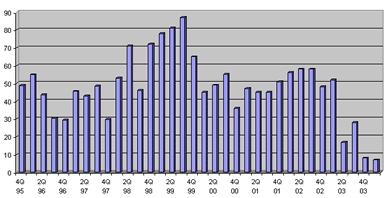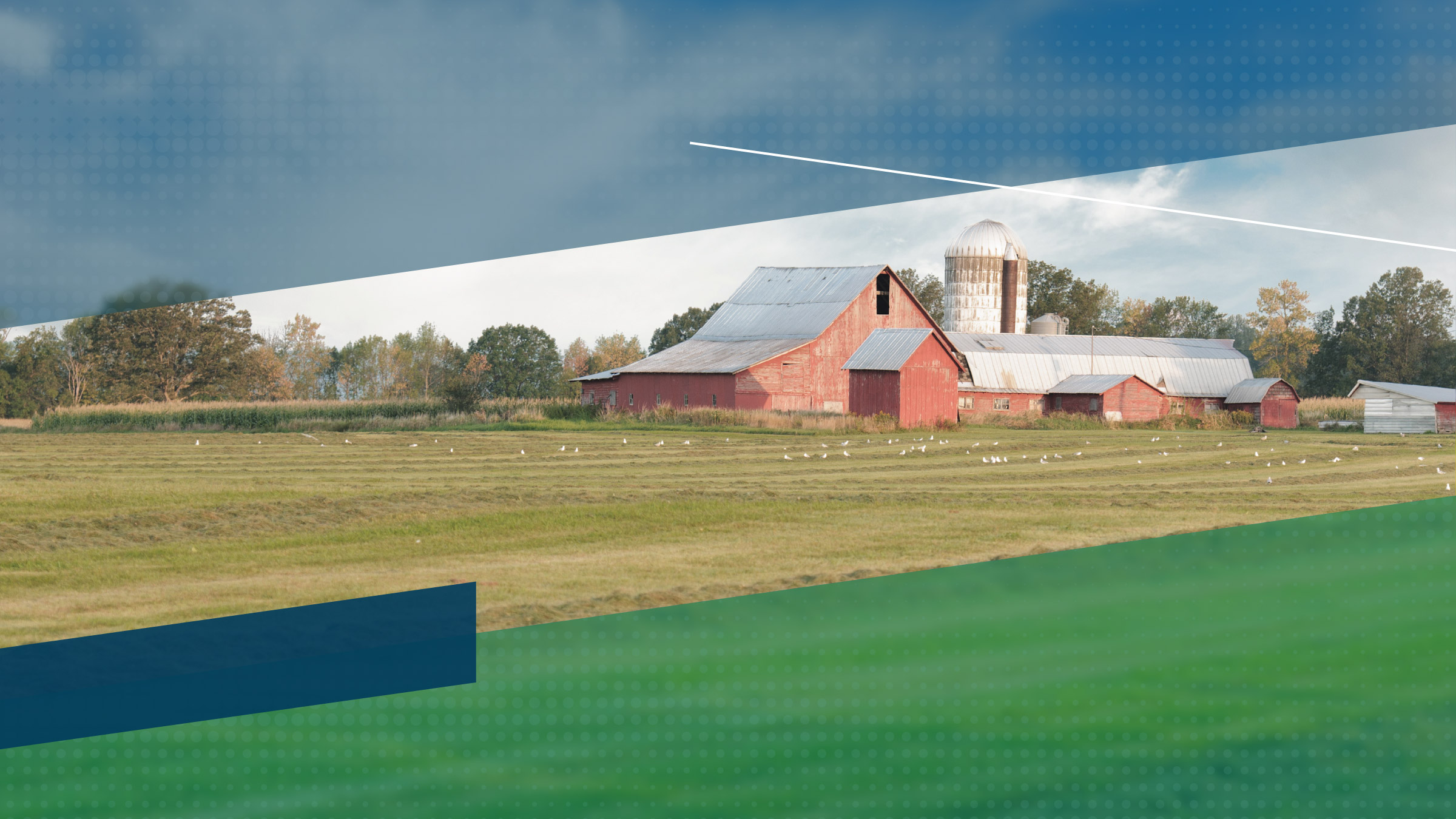Agricultural financial conditions were very strong during the first quarter, especially for soybean and dairy producers and North Dakota farmers overall, according to the Minneapolis Fed’s first-quarter agricultural credit conditions survey. Most indicators for growth in the agricultural sector improved, including loan repayment and farm income. Prices for many district agricultural products increased in the first quarter, highlighted by record milk prices and soybean prices of over $10 per bushel, leading some farmers to plant more soybean acres and dairy producers to expand. Lenders expect an increase in farm income and a growing demand for loans in the second quarter. However, drought remains a problem across most of the district.
Farm income, farm household spending
and capital investment
Lenders noted strong farm income in the first quarter: 68 percent reported an increase and 25 percent no change. Only 7 percent said income levels were below normal, the lowest figure since the survey began asking this question (see chart). “We continue to see benefits from higher grain and cattle prices,” wrote one South Dakota lender. Four of five lenders whose major customers produce soybeans reported higher farm income.
|
||||||||
Many agricultural producers appear to be saving the increased income. Over half of the respondents claimed that their customers’ household spending remained level, but 43 percent of lenders reported increased farmer household spending. This is especially true in North Dakota, where 61 percent of the lenders pointed to increased household spending. However, producers in Montana, who have been in drought for over six years, were a little tighter on the purse strings: only 21 percent of lenders there noted higher household spending.
Over half the respondents observed increased capital spending. “Higher commodity prices have fueled strong demand for land and farm machinery,” wrote a Minnesota banker. Almost 60 percent of lenders whose major customers produce dairy products reported higher-than-average capital spending. In addition to strong profits, modifications to the tax code may have also had an effect. “Changes in depreciation laws led to larger-than-normal capital expenditures,” said a Montana respondent.
Loan repayments and renewals
Increased profits led agricultural producers to pay back loans and reduce their need to extend loans. A third of lenders noted an increased rate of loan repayment, while only 5 percent reported a decrease. Regarding demands for loan renewals or extensions, nearly a quarter of surveyed bankers indicated lower activity and two-thirds reported no change.
Demand for loans, required collateral
and interest rates
Overall loan demand was steady through the first quarter. Sixty-one percent of lenders reported no change, 21 percent indicated lower demand and 18 percent, an increase. As for collateral requirements, only 5 percent of lenders revealed an increase and none reported a decrease.
Interest rates were mixed during the first quarter. Rates for all types of fixed-rate loans dropped about 10 basis points from the fourth quarter. However, rates for variable-rate loans increased about 20 basis points. All lenders indicated sufficient availability of funds to lend.
Land values
Rising profits have pushed land values higher. Respondents revealed that nonirrigated farm land and ranchland values increased from a year ago by an average of 15 percent and 14 percent, respectively. “There is inflation in land values and prices due to record profits in the cattle industry, current grain prices and interest rates,” a South Dakota lender commented. South Dakota lenders reported that farmland values increased by 21 percent from a year ago. “We have seen a significant increase in land prices and cash rents. In my 25 years of banking it is unprecedented in our area,” said a North Eastern South Dakota lender. In Minnesota, lenders saw an average increase in farmland values of 17 percent. (Note: Land prices can vary significantly, not only from state to state, but also from parcel to parcel. For more detailed information on agricultural land prices, see the Minnesota Land Economics Web.)
Over a third of lenders reported increases in land sales this year and 57 percent indicated no change. About two-thirds of the respondents claimed the buyers were farmers, while the remaining indicated the buyers were primarily investors and people looking for hunting and fishing land. About half of those surveyed indicated the purchases were financed through a commercial bank, and 30 percent of the purchases were financed by the Farm Credit System.
Outlook
Lenders are optimistic about the upcoming quarter—most expect farm income and capital spending to increase. “Looks like it could be a pretty good year for farmers going into spring planting,” said a Minnesota respondent. Another Minnesota lender commented, “If we can get good yields and have the prices hold we will have a good year.” However, some lenders expressed concerns about the continuing drought, higher input costs and over-valued land prices.Appendices: State Fact Sheet | State Fact Sheet-Outlook






